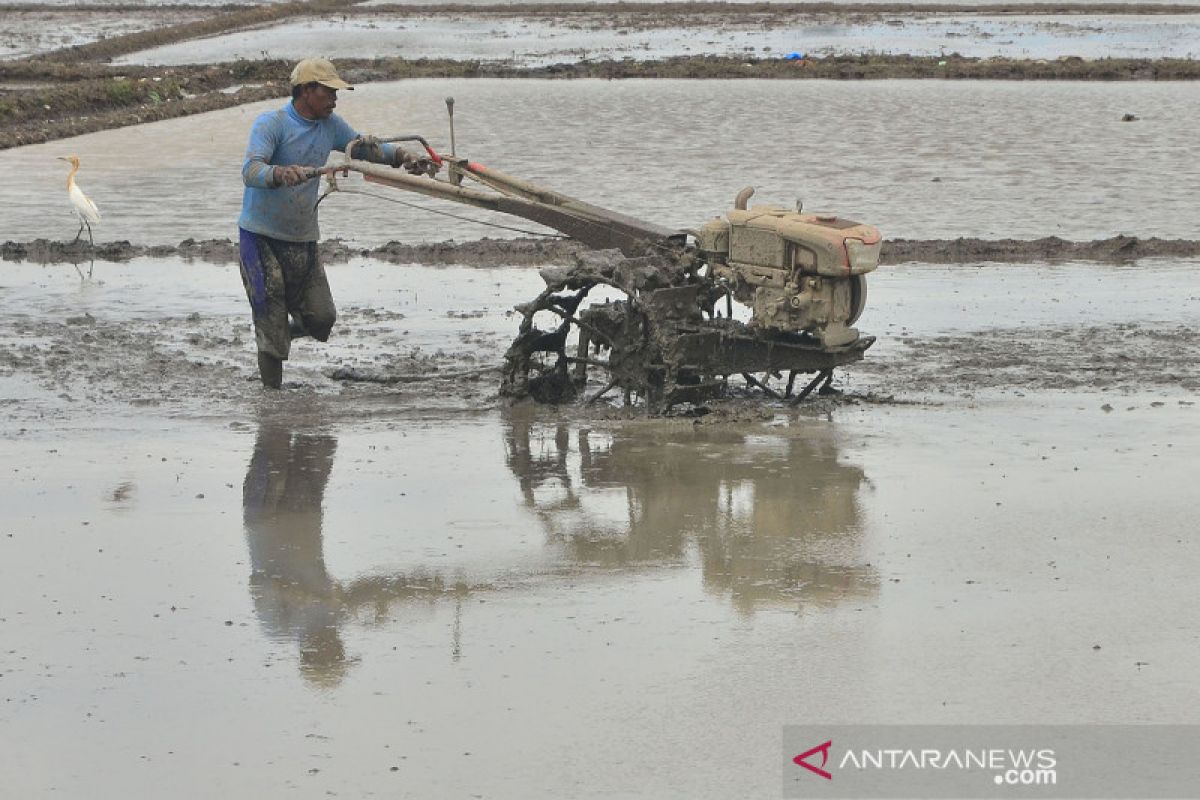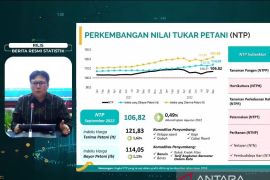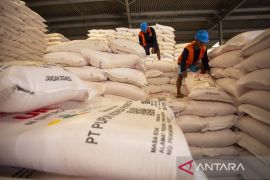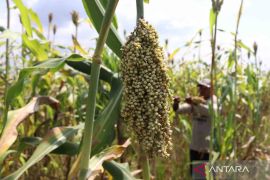The index received by farmers increased 0.82 percent, while those paid increased 0.44 percentJakarta (ANTARA) - The index of the Farmers Exchange Rate (NTP) rose by 0.37 percent to 103.25 in December, 2020 compared to 102.86 in November the same year, the Central Statistics Agency (BPS) reported.
The increase in NTP in December, 2020 was attributed to an increase of 0.82 percent in the Price Index Received by Farmers, which was higher than the increase of 0.44 percent in the Price Index Paid by Farmers (Ib).
"The index received by farmers increased 0.82 percent, while those paid increased 0.44 percent," Deputy for Distribution and Service at BPS, Setianto, informed during an online presentation in Jakarta on Monday.
The overall increase in NTP was not accompanied by a positive trend in all sectors, he added.
In the food crop sector, the index received by farmers decreased by 0.05 percent, while the index paid increased by 0.49 percent, reflecting a change of minus 0.54 percent with grain, cassava, and sweet potato contributing to the decline in the food crop index, Setianto said.
Meanwhile, the horticulture sub-sector recorded an increase of 1.01 percent as the index received by farmers in the sector was 1.34 percent, while the index paid was only 0.33 percent, he added.
"Commodities that affect the increase in the index received by horticultural farmers are cayenne pepper, red chilies, tomatoes, cabbage, carrots, potatoes, oranges, cucumbers, eggplant, and green chilies. Meanwhile, commodities that inhibit the index received by horticultural farmers are shallots, leeks, salak, apples, mangoes, chayote, napa cabbage, banana, and avocado,” Setianto said.
The increase in NTP for the smallholder plantation sub-sector was recorded at 1.63 percent, he informed. The index received by smallholder plantations was 2.10 percent, while the index paid was only 0.45 percent, he added.
Commodities such as oil palm, rubber, cloves, cocoa, coconut, nutmeg, pepper, pepper, sugar cane, areca nut, and candlenut affect the increase in the index received by farmers in the sector. Meanwhile, the commodities that act as barriers include coffee, tea, vanilla, and cashew nuts.
Meanwhile, in the livestock sector, there was an increase of 0.41 percent due to an increase in the index received by breeders of 0.79 percent, which was greater than the index of 0.38 percent paid by breeders, Setianto said.
Commodities that affect the increase in this sector are broilers, eggs, free-range chickens, dairy cows, buffalo, egg chickens, and ducks. Meanwhile, commodities that hamper the increase are beef, cattle, and goats.
A positive trend was also experienced by the fisheries sector, which experienced a total increase of 0.86 percent due to an increase in the index received by fishermen, both aquaculture and marine, Setianto said. There was an increase in the index received of 1.13 percent, which was greater than the paid index of 0.27 percent, he added.
Commodities that affect the increase in the index received by fishermen are milkfish, tuna, skipjack, anchovies, squid, and mackerel. Meanwhile, the ones that hamper are seaweed and lais.
Related news: BPS records 0.15-percent rise in agricultural labor wages in Nov-2020
Related news: Tofu, tempe record inflation amid soybean price hike: BPS
Translator: Ade Junida, Azis Kurmala
Editor: Gusti Nur Cahya Aryani
Copyright © ANTARA 2021












